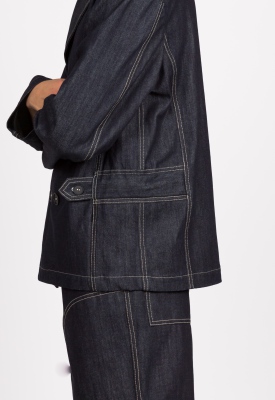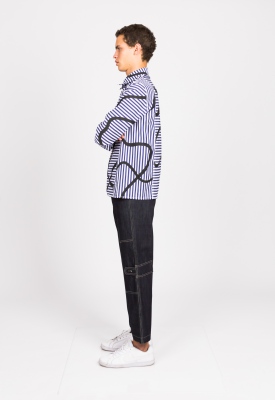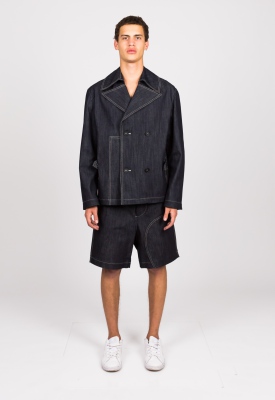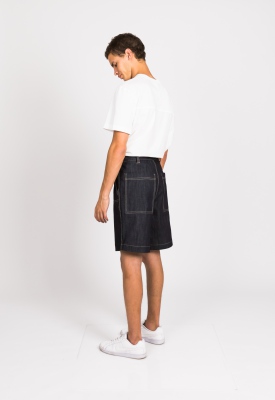What was your first project?
M140 is our first project and it was born only one year ago. Since the first collection we have been driven by the desire to re-invent the classic Italian clothing, which is so tied to my family's textile experience. This path has led us to revisit our roots by combining them with a new aesthetic vision: contemporary tailoring research. This process is personal and is born from the need to retrieve the classic from our past, or memory, and re-propose it with a new meaning that enriches it. Tradition and new thoughts that blend in our minds in perfect balance.
Creative process: do you work instinctively or planning each single small step? Where do your ideas come from?
I come from architectural studies and many are the artistic references in our works coming from different areas. Architecture and design have always been the basis of inspiration in our creative process, from the Italian school of Terragni and Giò Ponti, to the constructivism of Aldo Rossi, all those who have proposed innovative solutions through the study of forms and research of new materials. This is exactly what we try to apply in a different domain, fashion. Our design approach is also very close to my studies: I think of a collection and plan every single step with the same attention to detail as when designing. Programming and planning are needed to have a credible and durable project over time.
When did you meet Berto first?
We met Berto for the "Berto4Young Talents” program. We had friends who had already worked with the company and who gave us great feedback. Hence our desire to undertake a collaboration.
Which Berto’s fabrics have you been working with for your project/collection?
For the P/E18 we used a Raw Denim as a material that best expressed our inspiration and the "raw" nature of the whole collection. We've always wanted to put a denim base in our collections to take advantage of the big business force, so we were very happy to work with Berto's denim this season.
What's the most meaningful part about this project in your opinion? What have you been able to achieve thanks to this program?
The help that Berto's Talents project offers to young people like us, by making available their know-how, is priceless. One of the most critical aspects during the first collections is the minimum for the purchase of fabrics. Many times you are limited in the creation phase because you are forced to work with vendors on a pronounced basis or on a very limited stock because of the extra costs associated with the quantities needed for an early brand. That's why Berto's support is really great: opening the doors of his warehouses, choosing a high quality made in Italy without imposing on a minimum order can really make the difference.
“Less but better” could be read as an endorsement for purity in design but in fashion design too. It can also be adopted as an environmental message about reduction and sustainability. What do you think about this?
Absolutely. These are issues that today can not be tackled in any area, including fashion business. We are inspired by the great Italian masters of architecture, such as the aforementioned Terragni, Giò Ponti and Rossi, who have done research and research into new materials to find alternative and sustainable solutions to their greatest battle. For this reason, the prerogative of each of our piece of clothing is that aesthetics should always be closely linked to functionality and never end to itself. Today's sustainability and environment are issues that are now part of the "common sense" of the society in which we live, but I would like one day to talk about fair conditions at work, respect for the people, value of the chain and of human capital, concepts inherent in the "true" Made in Italy, with the same frequency and media force. But we are still far away.
Is there anything you'd like to do that you haven't done yet?
We have a lot of things in mind but for now we only think about planning next season. And for the rest .. step by step you will see.
(Answers by Michele Canziani)
http://milano140.it/




